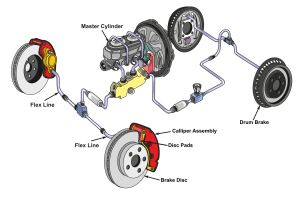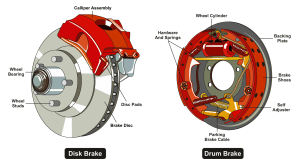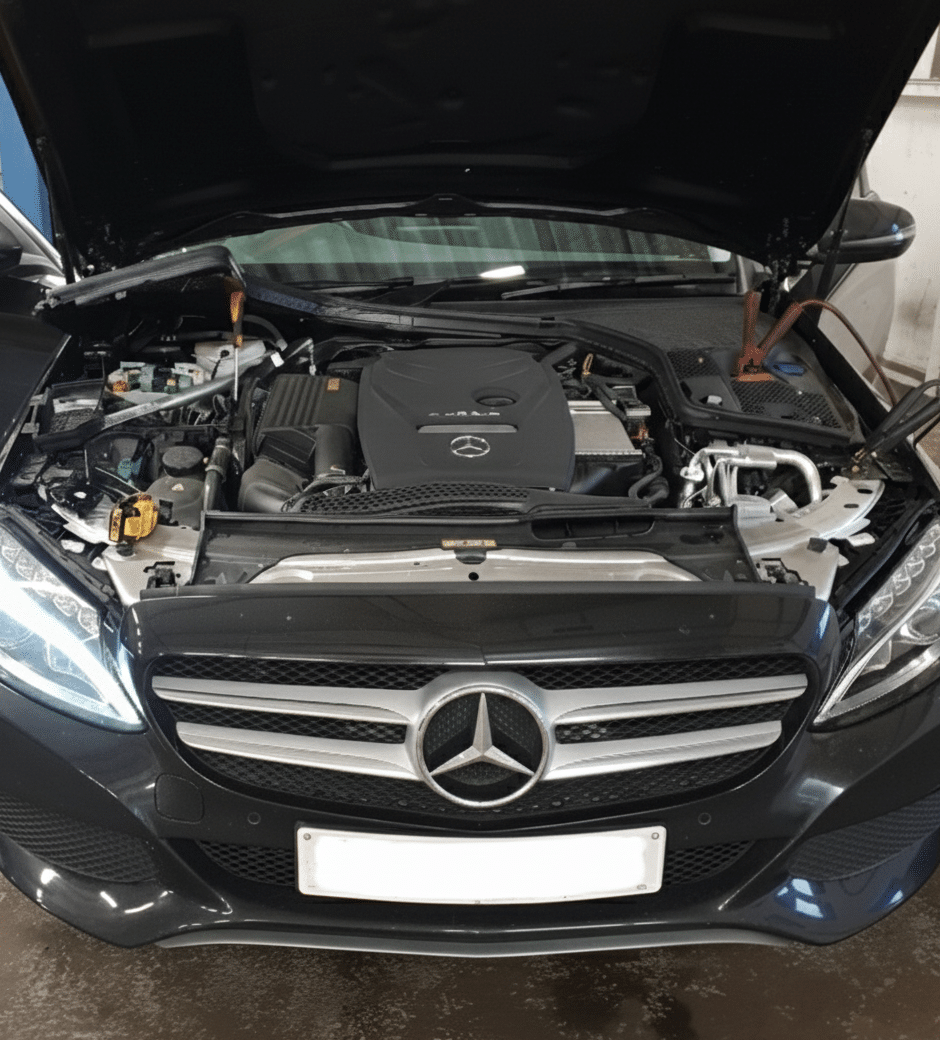Braking System
You might not think twice about your car’s braking system. Press the pedal, and your car slows or stops. Simple, right?
In truth, the braking system is a sophisticated network of mechanical and hydraulic components, all working together to keep you safe. It converts your vehicle’s momentum into controlled deceleration in the blink of an eye.
At Shires Garage Auto Services, we believe that understanding how car brakes work can help you spot problems sooner and appreciate just how vital your braking system is to everyday safety on the roads in Langport, Taunton and across the South West.
In this guide, we’ll walk you through:
- The science behind braking
- How your brake pedal activates the entire system
- Key safety components like ABS and the parking brake
- Why staying on top of brake servicing matters
Let’s start with the fundamentals.
Braking System Basics: How It Brings Your Car to a Halt
Every time you touch the brake pedal, you’re triggering a powerful chain of events. Your car, potentially travelling at motorway speeds and weighing well over a tonne, needs to come to a safe, controlled stop. That’s a lot of force to manage.
Understanding how car brakes work gives you insight into the balance of friction, pressure, and energy conversion happening beneath your feet.
Ready to dive deeper? Let’s look at how it all works.
The Simple Science Behind Braking
When a vehicle moves, it carries kinetic energy; the faster it travels, the more energy it holds. Brakes are designed to convert that kinetic energy into heat energy through friction. That’s how your car slows down.
There are several types of braking systems, but in most modern passenger vehicles, you’ll find a combination of hydraulic braking with either disc or drum mechanisms.
Here’s the basic process:
- You press the brake pedal
- Hydraulic fluid pressure is generated in a sealed circuit
- That pressure reaches each wheel
- Friction is created at each wheel through disc or drum brakes
- Your car slows as that kinetic energy is dispersed as heat

Many cars today also feature Anti-lock Braking Systems (ABS). These systems automatically manage brake pressure during hard stops to prevent wheel lock-up, helping you maintain control.
But what exactly happens from the moment your foot touches the pedal?
What Takes Place After You Press the Brake Pedal
It all begins with your foot. A gentle press is all it takes to set off a precise and powerful sequence.
- Brake pedal pressed: This initial movement signals the system to engage.
- Brake servo multiplies your force: Also known as a brake booster, this component amplifies your input so that even light pressure can generate strong stopping power.
- Master cylinder converts mechanical to hydraulic energy: Here, force becomes fluid pressure. The master cylinder pushes brake fluid into the system.
- Brake fluid activates: The fluid transmits pressure through reinforced brake lines and hoses to all four corners of the vehicle. This hydraulic system is sealed to prevent leaks and ensure pressure consistency.
Once the pressure reaches the wheels:
- Disc brakes (common on front wheels and increasingly used on all four): The brake pads are forced onto a rotating brake disc. This friction converts the vehicle’s motion into heat, slowing the car.
- Drum brakes (typically on rear wheels or older cars): Brake shoes are pushed outward against the inner surface of a drum, creating the same frictional resistance to stop the vehicle.

When you lift your foot, the system resets. Brake fluid pressure drops, the components retract, and the wheels spin freely again.
This entire process occurs in milliseconds, giving you responsive, intuitive control over your car’s speed.
Want to know more about the components behind the scenes? Let’s break them down.
Other Essential Features of the Braking System
Your vehicle’s braking system includes a number of features that support both safety and convenience. Two of the most important are ABS and the parking brake.
Anti-lock Braking System (ABS)
ABS prevents your wheels from locking up when you brake hard or suddenly. It does this by rapidly adjusting brake pressure at each wheel, several times per second.
The benefit? You keep steering control and stability, even in wet or slippery conditions.
Sensors on each wheel monitor rotation. If one wheel slows down too quickly (suggesting it’s about to lock), the ABS system momentarily reduces the brake force on that wheel before reapplying it. This cycle repeats until traction is restored.
Parking Brake
Sometimes called the handbrake or emergency brake, this system operates independently from your hydraulic brakes.
There are two main types:
- Mechanical: Pulling a lever engages a cable that manually applies the rear brakes.
- Electronic: A button activates a motor that does the same job.
Regardless of the setup, the parking brake functions separately from the main braking system and is legally required to act on at least two wheels, making it a vital safety feature as well as a parking tool.
Modern systems may even engage automatically when you park and release when you pull away.
Why Braking System Maintenance Matters
Your braking system is subjected to intense pressure, heat, and wear every time you drive. That’s why it needs regular inspection.
At Shires Garage Auto Services, we perform detailed brake checks during scheduled servicing. Our trained technicians know the early warning signs of wear, damage, or imbalance, and we’ll flag anything that could compromise your safety.
Servicing your brakes not only improves performance and responsiveness but can help prevent costly repairs later on. Don’t ignore unusual sounds, grinding, or reduced braking power – these are signals that your braking system needs attention.
If it’s been a while since your brakes were checked, now’s the time.
Time for a Brake Check? Let’s Keep You Safe on the Roads
Brake issues don’t usually appear overnight. They develop gradually, until the day you need to stop suddenly, and your braking system doesn’t respond the way it should.
At Shires Garage Auto Services, we treat brake safety as non-negotiable. If you haven’t had your brakes checked recently, or something doesn’t feel right, don’t wait.
We offer:
- Prompt and professional repairs using OEM* parts as standard
- Free courtesy car to keep you on the move
- Honest feedback and no-nonsense advice
- 12-month parts and labour guarantee
- Advanced diagnostic tools for accurate results
We have a {{average-rating}} star Google rating from {{review-count}} satisfied customers across Taunton and surrounding areas.
Book your service today or call us to arrange a brake check. We’re here to make sure every journey is a safe one.
📞 Call 01458 250570 Shires Garage Auto Services, Langport.
Call Now 01458 250570Save on Brake Servicing
*OEM stands for Original Equipment Manufacturer. When it comes to vehicle parts, this means the parts are made by the same company that produced the original parts for the vehicle manufacturer



